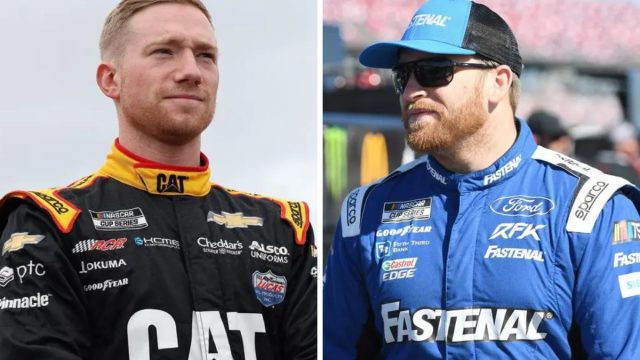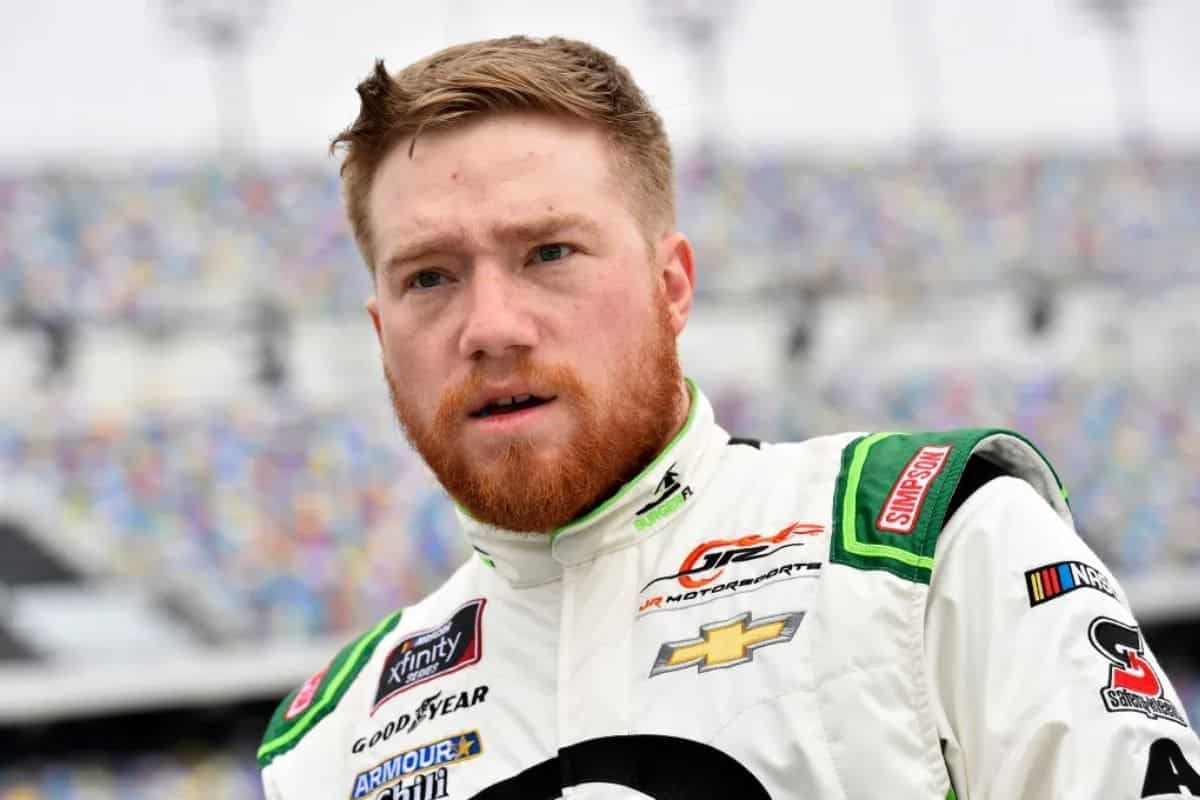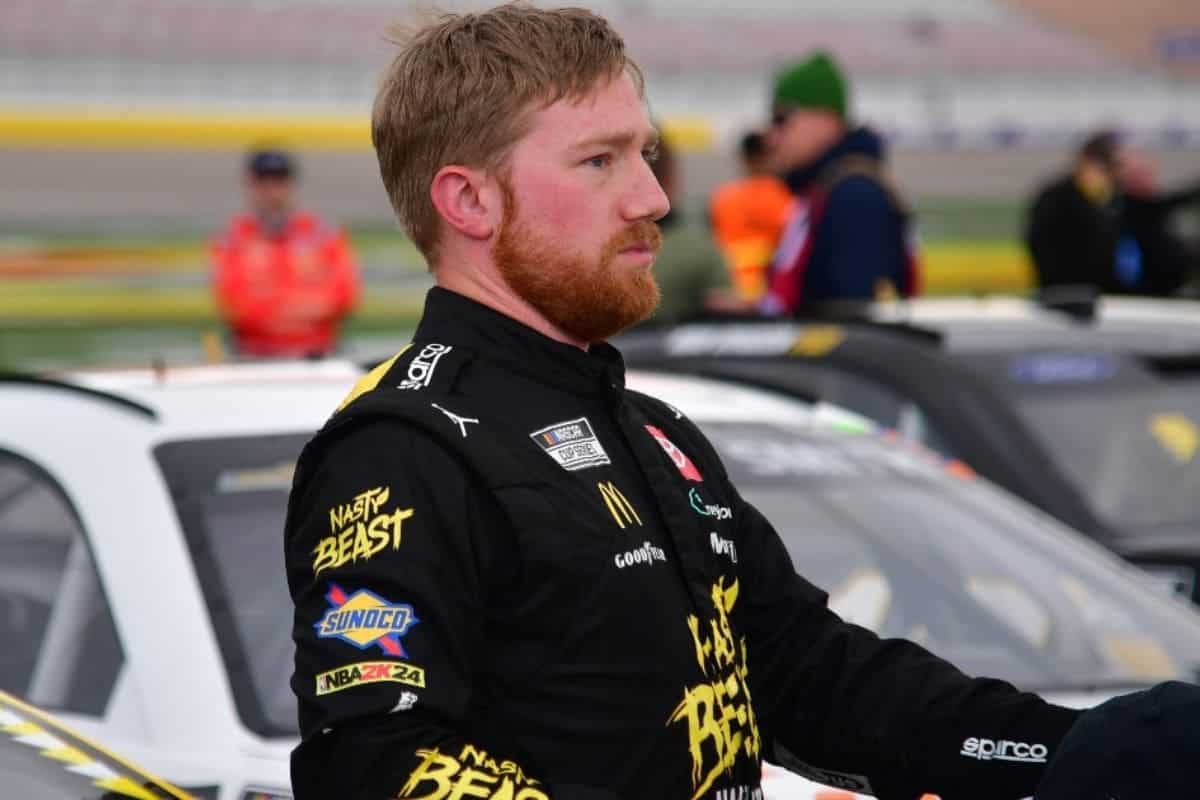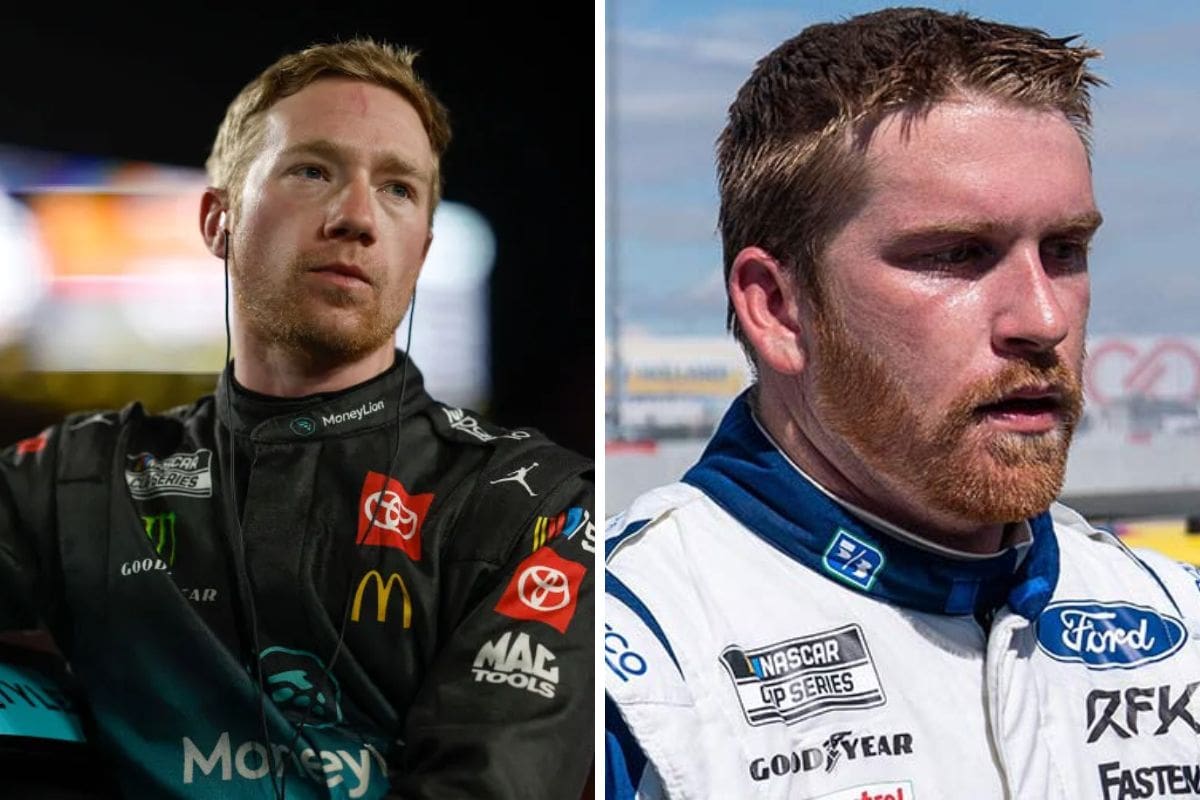Tyler Reddick Points Finger at Chris Buescher: In NASCAR, the recent clash between Tyler Reddick and Chris Buescher at Darlington has not only emphasized their personal rivalry but also ignited a broader discussion about sportsmanship and strategic racing. Reddick’s accusatory response post-collision highlights the intense demands drivers face as they vie for supremacy in a tightly contested season. This incident invites us to examine the fine line between aggressive racing and recklessness, and whether Reddick’s move was a calculated risk or a lapse in judgment.
Key Takeaways
- Tyler Reddick blamed Chris Buescher for their on-track incident during the Darlington race.
- Reddick expressed frustration over Buescher’s racing tactics, which he deemed aggressive.
- The clash potentially affected Reddick’s strategy and race outcome, adding tension between the drivers.
- Despite the blame, Reddick later issued a public apology, acknowledging his own part in the mishap.
Tyler Reddick’s Aggressive Move
Tyler Reddick’s aggressive move at Darlington, while aiming for victory, unexpectedly compromised Chris Buescher’s position in the race. Reddick, already secured in the playoffs with a win at Talladega, approached the Darlington race with a different level of fervor, driven by his declared affinity for the track and an evident desire to capitalize on every possible opportunity to assert his dominance.
His action, reflective of a high-risk, high-reward strategy, undeniably echoes his competitive spirit but also highlights a crucial moment of miscalculation that not only affected his race outcome but altered Buescher’s strategy and potential success.
Analyzing Reddick’s decision to undertake such a bold action requires understanding the psychological and strategic elements at play. Secured in the playoffs, Reddick had the liberty to operate under less stress compared to his contenders who were still vying for points to secure their own playoff positions. This scenario provided him with a buffer to adopt more aggressive tactics without the immediate threat of losing a playoff berth.
Post-Race Apology and Explanation
Following the tumultuous events at Darlington, Reddick issued a public apology, acknowledging his misjudgment in the heat of competition and its consequences on Buescher’s race outcome. This honest admission from Reddick highlights an intricate interplay of significant stakes and split-second decisions typical in NASCAR racing. The incident, which culminated in visible frustration from both camps, pivoted around Reddick’s aggressive inside move in the closing laps—a risky attempt to secure a lead but one that ultimately compromised both his and Buescher’s positions.
“I know, I f**ked up, I’m sorry… As soon as I knew it wasn’t going to work, I backed out. The last thing I wanted to do was wreck your car.” reddick
This gesture of accountability helps reduce potential long-term tensions between teams, important in a sport where alliances and mutual respect can influence race day strategies and outcomes. Analyzing the incident, it is clear that Reddick, caught in the adrenaline of potentially winning, miscalculated the spatial and speed variables critical in overtaking actions.
Through his apology, Reddick not only addressed the immediate fallout with Buescher but also set a precedent for responsibility that resonates well beyond the individual race, serving as a learning point for both seasoned and novice drivers in NASCAR’s competitive arena.
Reddick’s Reflection on the Incident
Although initially apologetic, Reddick’s later comments on SiriusXM NASCAR revealed a multifaceted perspective on the incident. His initial reaction was one of immediate regret, but his subsequent reflections suggest a deeper analysis of the events leading up to the clash. Reddick’s narrative shifted subtly as he dissected the moments that precipitated the encounter, indicating a reevaluation of both his and Buescher’s roles in the incident.
“It wasn’t going to be long until he was able to rip the top and scream for good. So, between that and just as Lane Choice in 1 and 2. I thought next time around we go into one and two he’s gonna take my lane away and that was gonna be it. He did it. know, five, six, laps, so earlier and was able to open the gap back up. […] I don’t know, just with… what I was looking at the time options I thought I had in the table, Kyle was improving running the top, and holding me off and wanted to, I thought that was going to be the last opportunity for me.” -reddick
View this post on Instagram
“If I just take second place, we have a good solid day, but man, My team works really, really hard to get in the race 20 cars. Like you said, we led 174 laps. If I just… settle for a second after the day that we had and don’t give them all the time when they’re used for my team, I’m not doing my part of the driver for this organization.” -Reddick
- Acknowledgment of Fault: Despite his initial apology, Reddick’s later comments conveyed an understanding that the action was risky and potentially ill-timed. He acknowledged that his decision-making in the heat of the moment was not without error, highlighting a self-awareness about the limits of aggressive driving.
- Analysis of the Decision: Reddick reflected on the strategic choices leading up to the incident, suggesting that while the intention was not to cause a wreck, the execution was flawed. This reflection indicates a strategic review of his racing technique and decisions under scrutiny.
- Consideration of Consequences: Beyond the immediate repercussions, Reddick seemed to contemplate the longer-term impacts of such incidents on relationships between drivers and their respective teams. This shows an awareness that every action on the track extends beyond mere race results, potentially affecting team dynamics and personal reputations.
Hamlin’s Take on the Incident
Denny Hamlin, the 23XI Racing boss, expressed his perspective on the controversial incident between Tyler Reddick and Chris Buescher, emphasizing the complexities of race dynamics and decision-making under stress. While Hamlin’s own performance was important, finishing P4, he closely monitored the events unfolding between his competitors. He noted that in racing environments, even the most seasoned drivers can find themselves at the mercy of split-second decisions that may not always result in the best outcome.
Hamlin praised the performance of his team’s pit crew, which greatly contributed to the #45 car’s advancement. This factor, according to Hamlin, is critical in understanding the backdrop against which the incident occurred. Teams often face immense expectations to maintain their momentum, which can lead to aggressive actions on the track.
“Certainly, they dominated the day. It looked like they really reaped the benefits. The pit crew did a great job of keeping them up front all day long, and his car was obviously very fast as well.“- reddick
His insights reveal a detailed understanding of the demands and responsibilities that define professional racing, showcasing the inevitable human factor that can sometimes lead to contentious outcomes. Hamlin’s reflections serve to analyze the incident and to cultivate a deeper appreciation for the intricate ballet that is high-speed racing.
Season Outlook for Reddick and Buescher
As the season progresses, Tyler Reddick enjoys a comfortable position with a secured playoff spot, while Chris Buescher faces mounting stress to secure a win and guarantee his participation in the postseason.
Reddick’s win at Talladega has not only solidified his playoff position but also allows his team, 23XI Racing, to shift their strategy towards optimizing performance for the playoff races.
Buescher, however, is in a precarious situation. Positioned twelfth in the standings and without a win, each race becomes increasingly critical for him and his RFK Racing team.
- Strategic Flexibility: Reddick’s early victory grants him the freedom to experiment and refine his approach without the immediate strain of qualifying. This could lead to resourceful strategies or more daring racing that might not be feasible for those still vying for spots.
- Psychological Advantage: Having a playoff spot secured, Reddick can race with a mindset focused on long-term championship goals rather than short-term survival. This psychological ease is a luxury Buescher currently does not possess, as each race without a win likely escalates the stress, potentially affecting his decision-making and performance.
- Team Dynamics and Resources: Reddick’s secure position likely means more resources can be dedicated to playoff preparations rather than split focus. In contrast, Buescher’s team must balance between securing a spot and planning for potential playoff scenarios, which could stretch their resources thin.
News in Brief: Tyler Reddick Points Finger at Chris Buescher
The incident at Darlington involving Tyler Reddick and Chris Buescher highlights the intricate balance between aggressive racing and accountability in NASCAR. Reddick’s decision to blame Buescher post-collision reflects broader implications for driver conduct and sportsmanship within the sport.
As the season progresses, the evolving rivalry between these drivers may further influence their on-track decisions, potentially affecting their standings and the dynamics of competition.
Our Reader’s Queries
Q. Who is Reddick number 45?
A. Tyler Reddick, an American professional stock car racing driver, is currently engaged in full-time competition in the NASCAR Cup Series. He commands the wheel of the No. 45 Toyota Camry, representing 23XI Racing.
Q. How many races has Tyler Reddick won?
A. Reddick boasts a total of 10 career victories in the Xfinity Series, showcasing his prowess on the track over time.
Q. Who owns Reddicks’ car?
A. Reddick clinched victory in a thrilling fashion following a last-lap wreck at Sunday’s NASCAR Cup Series event held at the renowned Talladega Superspeedway. The race, known for its intense competition on the series’ longest track, provided yet another spectacle. Michael Jordan, co-owner of the 23XI Racing team, overseeing the Cup cars of Reddick and Bubba Wallace, celebrated atop the No.
ALSO READ: Tyler Reddick Defends Chris Buescher Amid Darlington Drama



